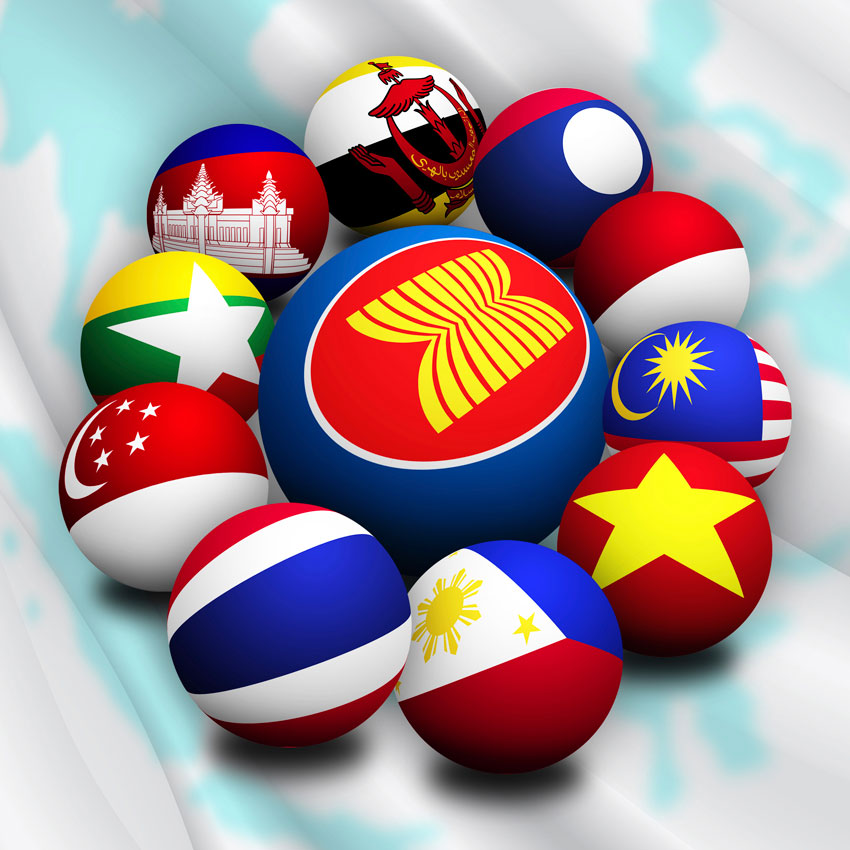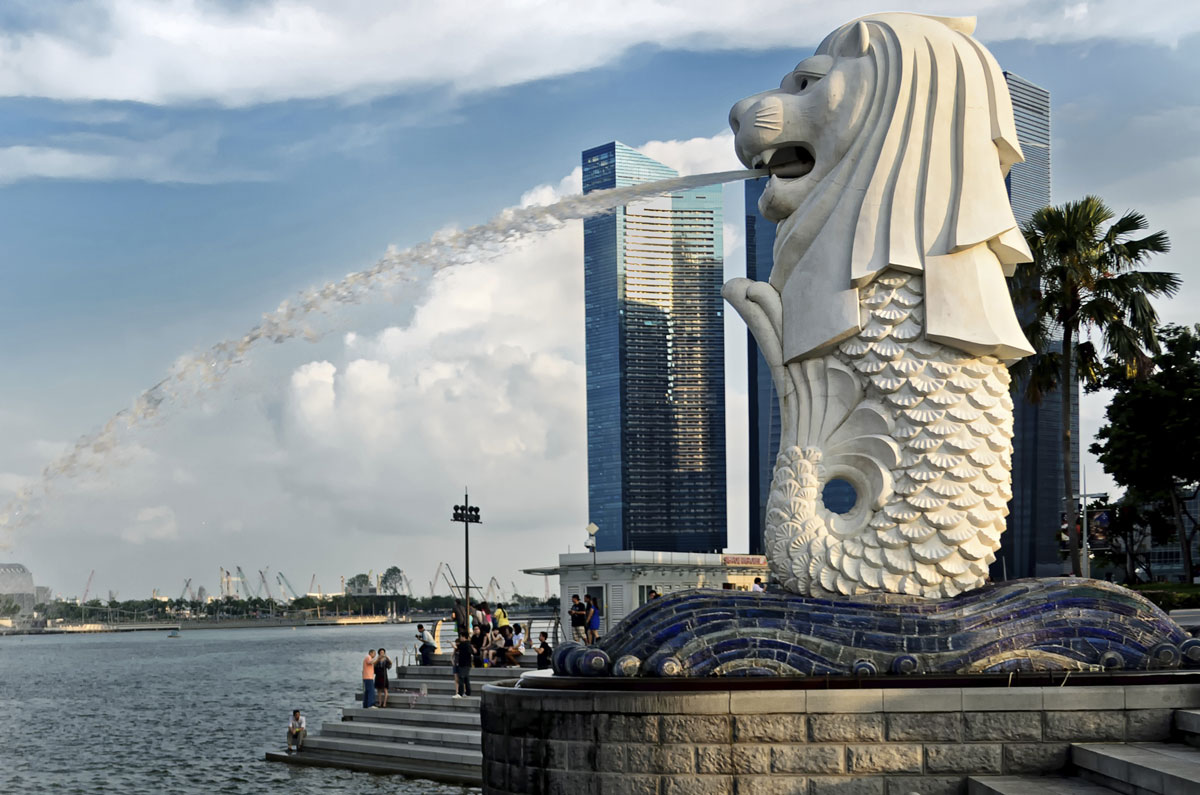INDIA UNDERLINES LOOK EAST PRIORITY
Merlion Statue in Singapore. (XtianFer | Getty Images)
Prime Minister Narendra Modi’s recent visit to attend the funeral of Singapore’s founding father Lee Kuan Yew underlined the importance of India’s Act East Policy yet again and more specifically the Association of Southeast Asian Nations (ASEAN) comprising Brunei, Cambodia, Indonesia, Laos, Malaysia, Myanmar, the Philippines, Singapore, Thailand, and Vietnam, writes Siddharth Srivastava.
These are economies at vastly different stages of development but all sharing immense growth and income generation potential. India, the second most populous country in the world, has been seeking enhanced cooperation with ASEAN. Areas include maritime security, freedom of navigation, anti-piracy, disaster relief, counter terrorism and peaceful settlement of disputes in accordance with international law.
Strategic Interests
Always concerned about China’s growing influence in the region, military or economic, whether in Nepal, Bangladesh, Sri Lanka or Myanmar, New Delhi has kept a close watch on the territorial dispute in South China Sea. China is known to speak in dual tones when it concerns matters of asserting its hegemony over border and other territories. The leadership maintains a mundane adherence to diplomatic protocols and nuances.
At the same time it does not hesitate to deploy its massive military arsenal, that can only be matched by America, to send across a belligerent message should the need arise. India has been supporting freedom of navigation in the South China Sea citing principles of international law, including the 1982 UN Convention on the Law of the Sea. South China Sea dispute formed part of the India-US joint statement issued during President Barack Obama’s visit to New Delhi in January. India’s flagship state-owned explorer Oil & Natural Gas Corp (ONGC) has operations in oil blocks in South China Sea that Beijing has been unhappy about.
Vietnam, predictably, has been pushing for greater exploration efforts by Indian firms. New Delhi has chosen to back ONGC’s forays in South China Sea as Indian hydrocarbon majors are well versed with the strategies employed by Chinese entities to win rights over energy assets across the world, whether in Africa, Myanmar and South America. State-backed Chinese energy companies are known to deploy multiple tactics, including sweetened deals and financial and political muscle to get their way.
For its part China believes the issue of its territorial aggression has been blown out of proportion, helped in no small measure by the English language media with a pronounced pro-western bias. Beijing remains suspicious that ASEAN has been co-opted by America, other western powers and Japan to contain China’s growing regional influence, both territorial and economic.
China has for long insisted that geographical disputes need to be resolved bilaterally between nations that are impacted rather than multilateral bodies. “We support the building of the ASEAN community, but ASEAN is not a party concerned to relevant disputes over the South China Sea,” Hong Lei, a foreign ministry spokesman, told a regular March 11 news briefing. Lei was responding to critical comments by ASEAN top official, Secretary-General Le Luong Minh on the South China dispute.
Business with ASEAN
Home to more than 600 million people, ASEAN has a larger population than the European Union or North America. In its annual Asian Development Outlook for 2015 published in March this year, the Asian Development Bank (ADB) has said China’s economy is slowing, but Asia will remain a growth hot spot as India and Southeast Asian economies roar ahead.
Emerging Asian economies will grow 6.3% in both 2015 and 2016, unchanged from last year, ADB said. According to a May 2014 report by McKinsey & company, if ASEAN were a single country, it would already be the seventh-largest economy in the world, with a combined gross domestic product (GDP) of $2.4 trillion in 2013. It is projected to rank as the fourth-largest economy by 2050. The competition within is immense. While Indonesia is the largest economy of Southeast Asia, there is no guarantee it will remain so.
According to McKinsey, ASEAN is reaping a demographic dividend due to its youthful population. “Perhaps most important, almost 60 percent of total growth since 1990 has come from productivity gains, as sectors such as manufacturing, retail, telecommunications, and transportation grow more efficient.”
Trade is thus a focus area of engagement between ASEAN and India. The two regions represent an aggregate population of 1.8 billion of mostly young and highly aspirational individuals. Speaking at the Delhi Dialogue VII, an annual India-ASEAN conference held in the month of March, Anil Wadhwa, a top official in India’s foreign ministry said, ASEAN-India free trade agreement in goods signed in 2009, has already resulted in increase in trade between the two economies to over $74 billion in 2013-14 from $44 billion in 2009-10.

“This year, the figure is expected to rise to $100 billion. Our aspiration is to take ASEAN-India trade to $200 billion by 2022, and the RCEP [regional comprehensive economic partnership] negotiations, which are currently underway, will also contribute to this,” Wadhwa added. No doubt Modi taking time out from his hectic schedule to visit Singapore has deeper relevance and meaning.


